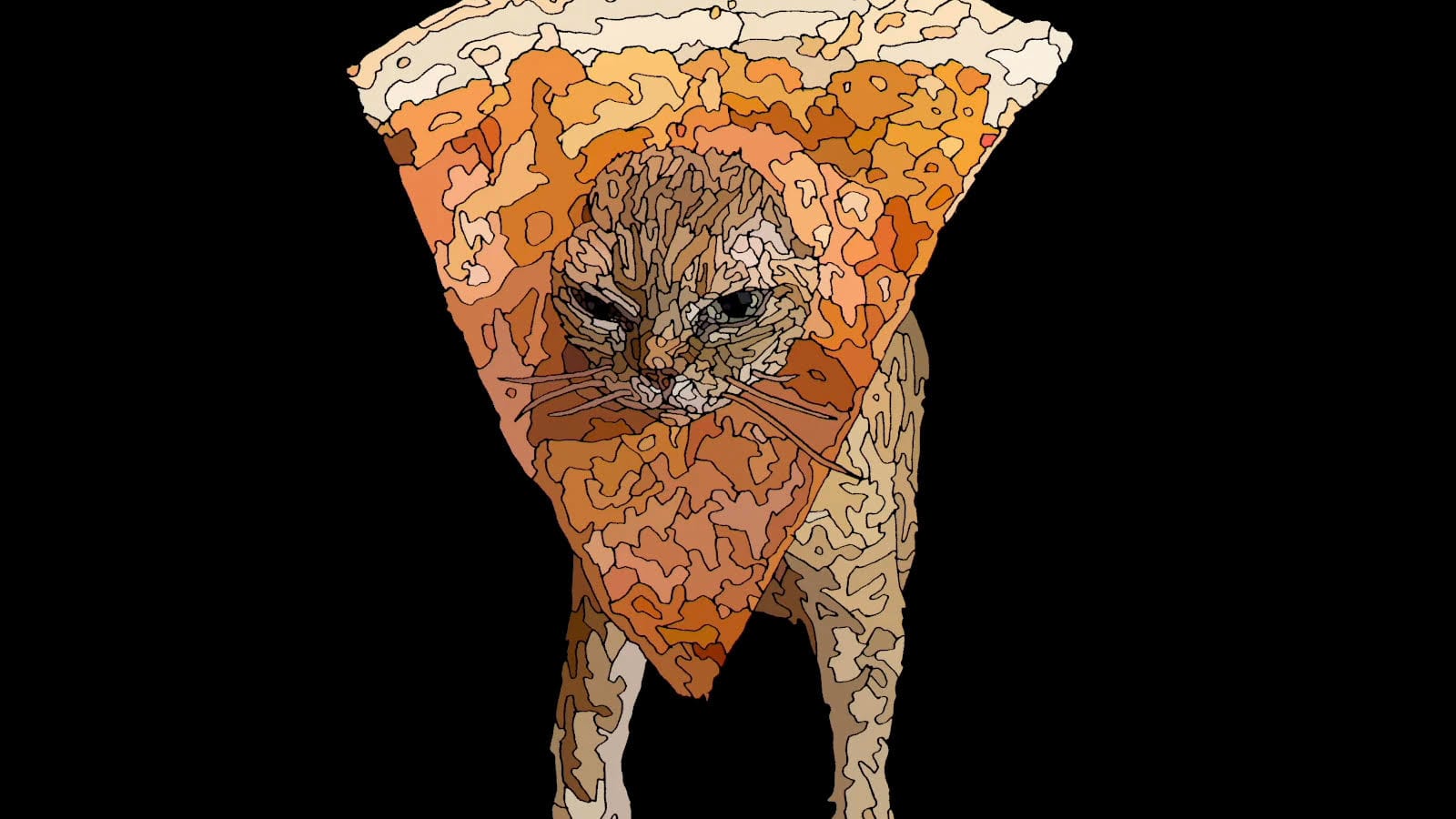Consuming the Cat: Brenda Lien Calls Out an Internet Fetish

The Internet’s hardcore feline obsession may seem harmless, but is there something darker at play behind the millions of memes and GIFs it generates, or the eager crowds who gather to meet online animal celebrities like Grumpy Cat (R.I.P.)? In her short film Call of Cuteness, artist and composer Brenda Lien uses stunning abstract rotoscope animation to probe this question, creating a beautifully menacing exploration of the ways in which we exploit animals in pursuit of viral entertainment. Paired on the Criterion Channel with Nobuhiko Obayashi’s equally disturbing head trip House, Lien’s film follows a possessed cat who haunts a group of high school girls in a deserted country home. Recently I exchanged some e-mails with Lien about her practice and how she employs multimedia techniques to critique our culture of consumerism and waste. Here are the highlights of our conversation.
Tell us a little bit about your background. Where did you learn your craft?
I have been studying art for seven years and am now finally graduating. In that time I have worked with various formats and styles: live action and animation, narrative and experimental, cinematic films made to be screened in movie theaters and video art for installations in a gallery context. I also make music, mostly for films. My art school—University of Art and Design in Offenbach, Germany—gives students lots of space to experiment and evolve, and that has been great for me.
Can you tell me more about what inspired the project?
I would recommend watching the film first, before reading my “explanation.” Cute animal content has become one of the most popular things on the web—it is an integral part of people’s daily Internet experience. Call of Cuteness started out with the idea that we are “feeding” off the cats’ cuteness without thinking about their well-being. How does the animal really feel when it is jammed into a Halloween costume?
The film questions this principle of personal pleasure at the cost of others within the context of a cat’s life and basically tells the story of being a commodity: the kitten is constantly filmed, controlled, and staged for consumption from the moment it’s born. As soon as it has reproduced, the cat reaches its “expiration date” and gets thrown into the ocean, which is polluted with all this other cultural “waste.”
The protagonists in Call of Cuteness experience a lot of violence, and many viewers have gotten pretty upset seeing those cats suffer. My answer to that is: animals and people all over the world experience this type of violence daily—and the luxury of first-world privileged people usually has a direct relation to it, and even depends on it. The sad lives of livestock or sweatshop workers do not seem to have the same unsettling effect on people as this sad depiction of a cat does. And this is symptomatic of many things that are going wrong in our consumerist economy and culture.







